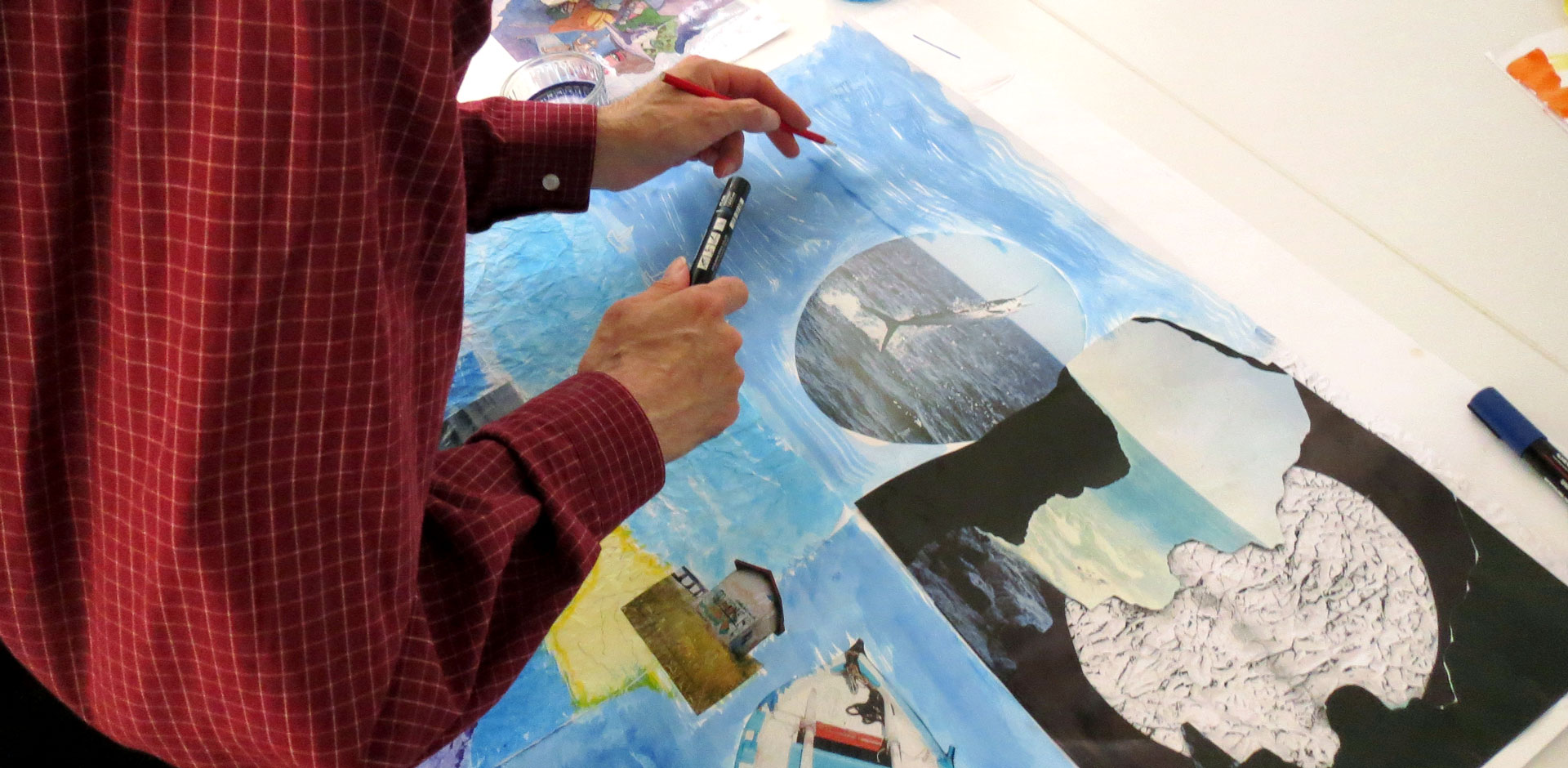The museum regularly develops projects with associations, schools and social welfare organisations in Haute-Vienne. In this section you will find testimonials on the various projects that have taken place or are on-going.

« La classe, l’œuvre! » with Rochechouart secondary school
For 2018, a partnership was set up with Rochechouart secondary school as part of the “La classe, l’oeuvre!” educational programme jointly organised by the French Ministry for Culture and the Ministry for Education.
This programme aims to unite a class and an art work that is kept or exhibited in the museum. The work, jointly selected by educational teams from the school and the museum’s outreach officer, acted as a guiding theme in the production of a project that was made public during the Museum Night event (19th May 2018).
This educational programme aims to create the right environment for a project that is linked to subject curricula whilst offering the necessary conditions to showcase students’ work. This was the first time the museum had taken part in this national programme and work based around the spring 2018 exhibition dedicated to artist Yona Friedman (born in 1923) was proposed.
A peac project with Langevin secondary school in Saint-Junien
The PEAC (Artistic and Cultural Education Studies) aims to promote equal access to art for all students through the acquisition of a personal artistic culture.
In this case, it is a multi-annual partnership agreement (taking place over 4 years) with the secondary school in Saint-Junien. A year-group of pupils will visit the museum several time to create a specific work of art, which can then be shared either on the education authorities’ website or on a dedicated blog.
This project adheres to the requirements of Artistic and Cultural Education Studies. At the end of the four academic years, all of the pupils at the school will have been able to take part in dedicated time at the museum.
10 yearS of collaboration with the Rochechouart young children’s services
We have been working with the Rochechouart young children’s services for more than 10 years. These services incorporate three structures: a crèche, a childminders’ centre and a family zone.
Each unit regularly visits the museum, but closer links have developed between the childminders’ centre and the family zone. From March to December, the childminders’ centre visits the museum on one Wednesday per month. During the course of these 10 sessions, children and adults explore the site and the works that are exhibited there.
Over the last 10 years, the museum has welcomed more than 250 children in this way. Children and adults alike are offered the opportunity to experience and enjoy art through exposure and creative work. Each visit is a chance to explore, share and encourage artistic awareness. The workshops are a perfect time to experiment with material, colour and shapes using the exhibited works as a starting point.
An innovative partnership with the Educational Action in an Open Environment (AEMO) department of the Western Haute-Vienne Maison du Département.
For more than 10 years, the outreach department at the Musée d’art contemporain de la Haute-Vienne has been working in partnership with the Educational Action in an Open Environment (AEMO) department of the Western Haute-Vienne Maison du Département.
Every fortnight from March to July, groups come to visit the museum accompanied by 2 Maison du Département educators and an outreach officer from the museum. The first visit takes place with the families (so that parents can learn about the museum with their children) and ends at the beginning of July with an exhibition of the works that have been created in the museum’s educational area.
Fighting disability with the Grossereix - Limoges IEM (Institute for Motor Skills Development)
An agreement has been in place between the museum and Grossereix - Limoges IEM since 2014. This partnership has made it possible to welcome 46 children to the museum over the last 4 years. Groups visit the museum three times a year (for each new exhibition) for workshops, which are supported by monthly visits to the institute by an outreach officer from the museum.
This project is part of an interdisciplinary educational approach, in collaboration with museum staff and the institute teaching staff and educator. It reflects the desire to see children with disabilities taking part in a cultural project. It also aims to help these children develop their communication and sharing skills, as well as their creative and critical side. The workshops focus on fine motor skills, but always in a fun, relaxed way.
